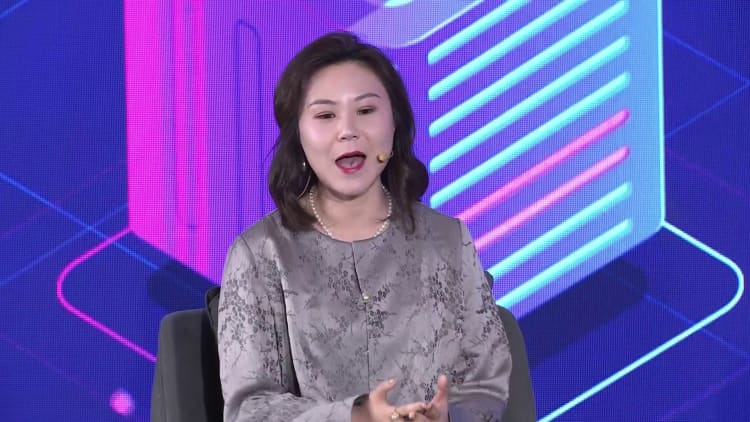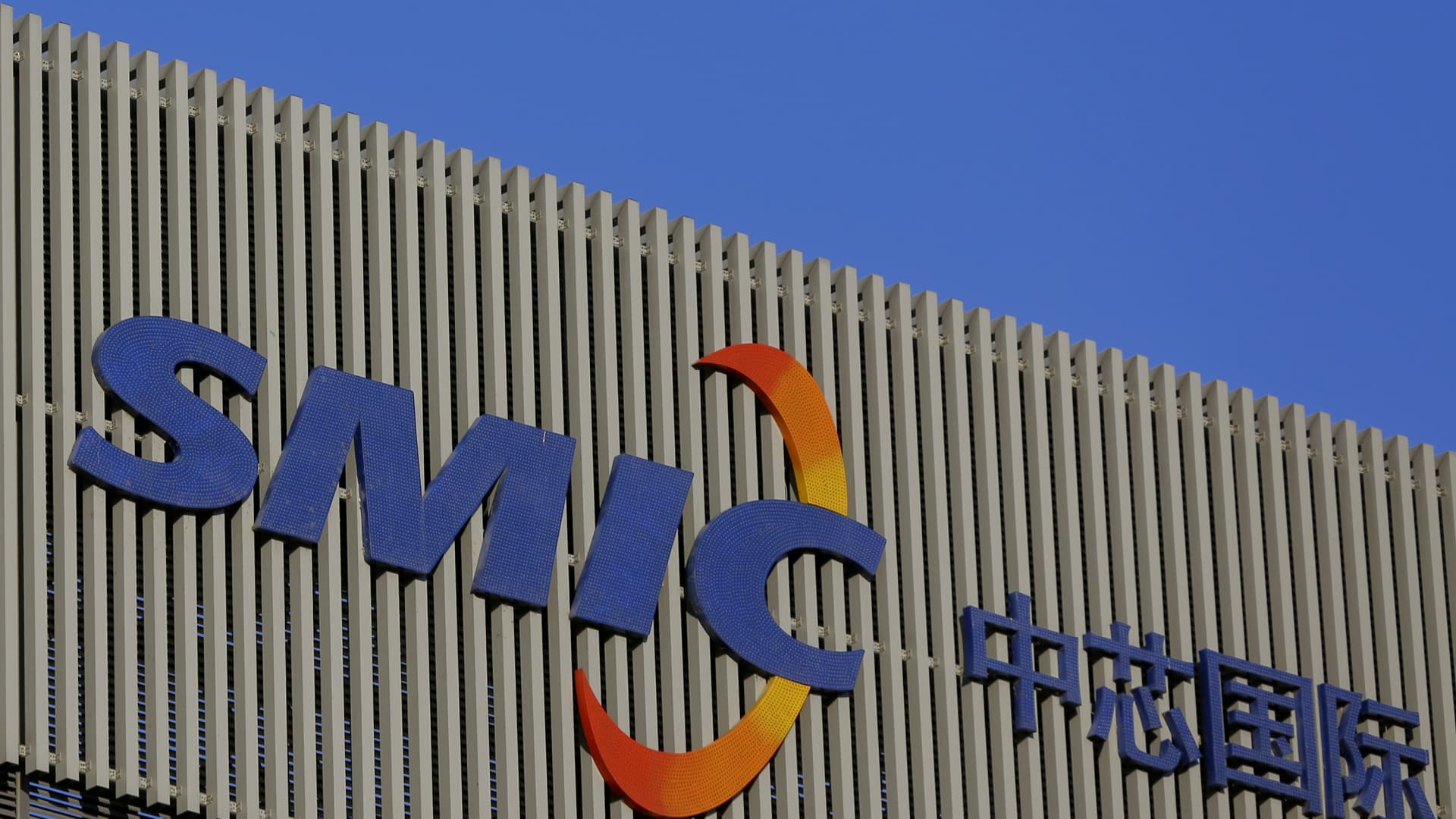BEIJING, CHINA – DECEMBER 04: A logo hangs on the building of the Beijing branch of Semiconductor Manufacturing International Corporation (SMIC) on December 4, 2020 in Beijing, China. (Photo by VCG/VCG via Getty Images)
Vcg | Visual China Group | Getty Images
China’s largest chipmaker SMIC on Thursday posted a 80% drop in third-quarter profit as global demand weakness hit foundries hard.
Net income for the quarter ended September plunged 80% compared to a year ago — larger than the 64% drop posted in second quarter 2019, according to company figures.
Here are SMIC’s third-quarter results versus LSEG consensus estimates:
- Revenue: $1.621 billion, vs. $1.625 billion expected
- Net income: $93.98 million, vs. $165.1 million expected
SMIC, or Semiconductor Manufacturing International Co., posted revenue of $1.62 billion in the third quarter of the year, down 15% year-on-year. Net income for that period was $93.98 million, far below analysts’ expectations of $165.1 million.
SMIC is China’s biggest foundry, manufacturing semiconductor chips that other firms design. The firm is seen as a key hope to Beijing’s ambitions to boost its domestic semiconductor industry and catch up with rivals like Taiwan’s TSMC and South Korea’s Samsung — even as the U.S. continues to curb China’s chipmaking technology and exports.
“In the China market, the high product inventory problem that started in the third quarter of last year has been mitigated and the inventory has decreased to a relatively healthy level,” said SMIC in its earnings call Friday morning.
“But American and European customers’ inventories – they will remain at historically high levels,” said the company.
An ongoing slump in demand for certain chips that go into consumer products, such as memory, has badly impacted SMIC, as well as the likes of its Asian rivals TSMC and Samsung.

Consumers have been cutting back on purchases of consumer devices as inflation soared. As a result, smartphone and PC makers have been grappling with excess chip inventories and prices for memory chip prices fell.
SMIC, which also manufactures automotive chips, said inventories for such chips are “now in relatively high level after a short supply for three years” and this has caused major customers to “tighten their orders.”
“After more than one year’s ups-and-downs in the market, customers have experienced the shift from aggressive expansion two years ago to defense this year,” said SMIC.
Data from the Semiconductor Industry Association said that global semiconductor sales for September increased 1.9% compared to a month ago, showing signs of a chip recovery. Globally, September sales fell 4.5% from a year ago.
“Global semiconductor sales increased on a month-to-month basis for the seventh consecutive time in September, reinforcing the positive momentum the chip market has experienced during the middle part of this year,” said John Neuffer, president and CEO of the Semiconductor Industry Association.
“The long-term outlook for semiconductor demand remains strong, with chips enabling countless products the world depends on and giving rise to new, transformative technologies of the future,” Neuffer said.
SMIC has been under the spotlight for a “breakthrough” 5G chip in Chinese tech giant Huawei’s new smartphone launched in September.

The U.S. has slapped sanctions on Huawei and SMIC.
In 2019, Huawei was placed on the U.S. trade blacklist, which restricts American firms from doing business with the Chinese company. The U.S. also limited Huawei’s access to foreign-produced semiconductors made with U.S. technologies, and barred its agencies from obtaining Huawei equipment or services.
SMIC was also put on a U.S. trade blacklist in 2020, limiting its ability to acquire certain U.S. technology by requiring exporters to apply for a license to sell to the company.
In a blow to U.S. sanctions, a teardown of Huawei’s latest Mate 60 Pro smartphone revealed a Kirin 9000s chip fabricated by SMIC that appears to support 5G despite U.S. attempts to cut Huawei from key technologies including 5G chips.
The advanced 7-nanometer processor in Huawei’s new phone signaled China is seeing early progress from building self-reliance in science and technology as it pushes past U.S. efforts to contain Beijing’s rise. Analysts previously said SMIC’s technology is several generations behind TSMC and Samsung.
Last year, Washington introduced sweeping export restrictions aimed at cutting China off from advanced chip tech and equipment. These curbs have cut SMIC off from key chipmaking tools to manufacture the most advanced semiconductors.
SMIC said it expects fourth quarter revenue to increase by 1% to 3% from the third quarter.

